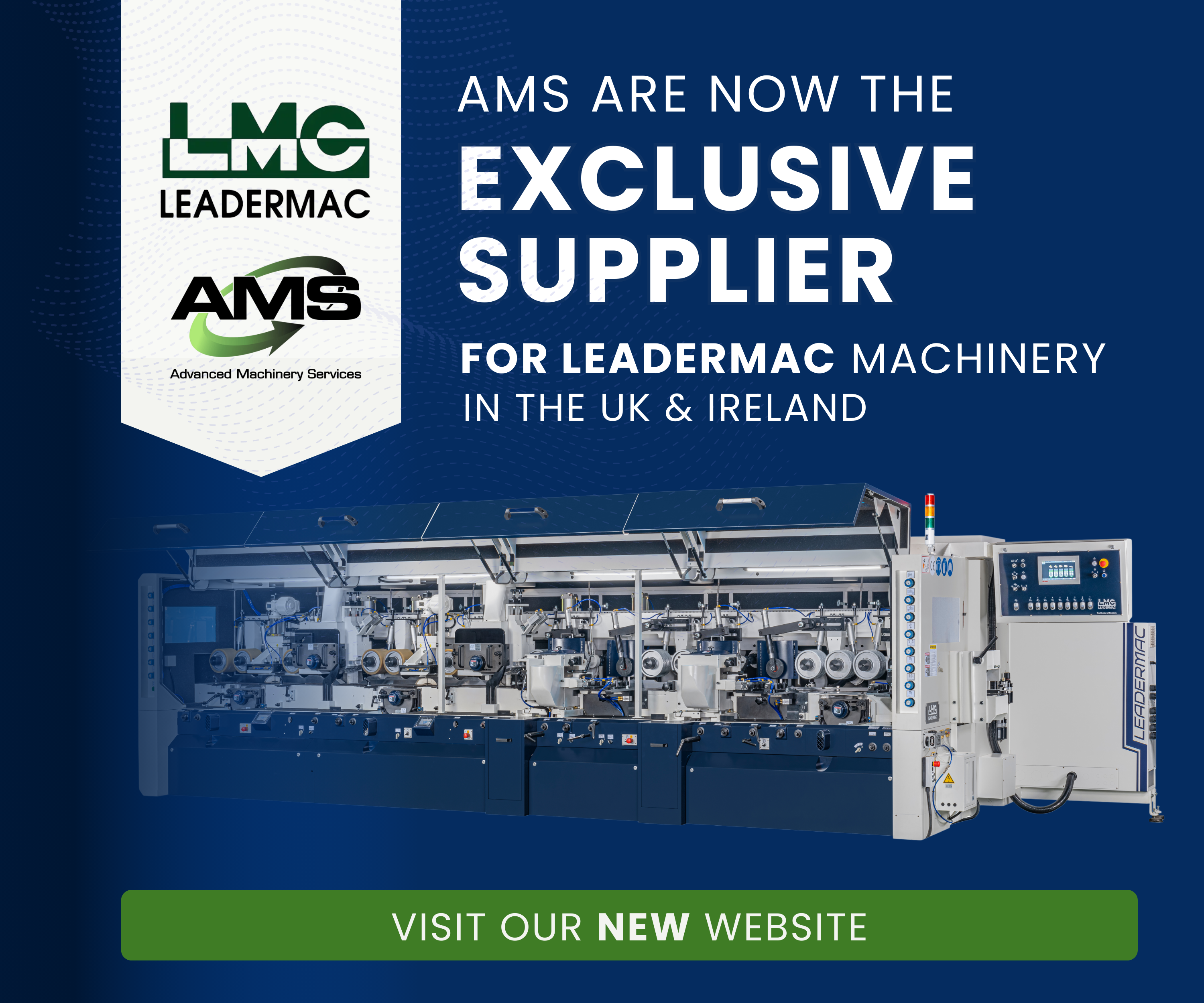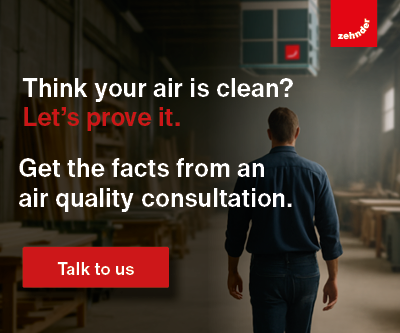For any business to remain competitive, it must invest in its own future. And in the surfacing market, Egger’s record of investment and achievement help it maintain its leading position with first class maunfacturing facilities creating innovative and technically-advanced products which regularly set new standards for the surfacing industry.
Massive investments in impregnation and lamination lines are designed to ensure furniture manufacturers continue to have access to some of the industry’s most stylish, and highest-quality, wood-based materials.
After spending more than £100m in 2006/7 creating what was Europe’s most-advanced wood-panel manufacturing site, Egger UK could have been forgiven for sitting back and resting on its laurels. But in fact, since then, the company has spent almost the same again on its factory in Hexham, Northumberland – with a string of investments in new buildings, plant and equipment. All are designed to keep it at the forefront of chipboard manufacturing and product innovation.
The business is part of an international, privately-owned group of companies – headquartered in Austria – with 17 European manufacturing plants producing a wide range of materials including melamine-faced chipboard (MFC), medium density fibreboard (MDF), laminates, OSB (orientated strand board), laminate flooring and timber. The Hexham site was the first foreign plant investment for the Egger Group.
Egger UK has approximately 650 employees in Hexham and 100-plus at its chipboard production facility in Barony, Ayrshire. The company has an annual turnover in excess of £250m and is the largest manufacturing employer in Northumberland.
Although it has been producing raw chipboard in the UK for more than 30 years, and is a major customer of commercial harvesting operations in nearby Kielder Forest, much of its recent investment has been in its value-added products – with around £25m spent on upgrading its impregnation and lamination lines.
“In the impregnation department, cellulose-based décor papers are impregnated with low-viscosity amino resins to form semi-cured thermosetting sheets suitable for laminating onto particleboard,” explains upgrading plant manager Stephen Romano.
“Each roll of paper weighs more than a ton, is over 5km long and produces over 1000 sheets – enough for 500 boards. Depending on the size of the production run, rolls can be used several times with unused raw paper sealed in polythene before going back into storage.
“Pre-printed or pre-pigmented base paper is used, and each decor has its own production specifications to control the resin content, moisture and cure of the paper so as to ensure its quality during and after the lamination process.
“Each new paper roll received from third-party suppliers is colour-matched under artificial daylight D65 against a group-controlled master sample. This standardised test ensures the colour is matched in the same conditions each and every time.”
Impregnation lines from leading supplier VITS Technology GmbH are the machine of preference across the Egger Group – with knowledge on setting up VITS lines, gained in one location, shared with other plants.
This was illustrated recently, when staff from Hexham went to Russia to support the commissioning of new VITS impregnation lines at the Egger factory in Gagarin – training local engineers in how to get the optimum results from the equipment.
Over the last four years, Egger has upgraded its two VITS lines at Hexham, installed a new glue kitchen, automated loading racks and an air cleaning system.
The VITS upgrades have increased speed, and improved resin application, enabling heavier papers to be impregnated without any significant time lost. Normally, the heavier the paper the slower the line speed, as more drying is needed.
The automated loading racks reduce the risk of damage while the new industry-leading biological exhaust-air cleaning system reduces energy consumption and has best-in-class emission levels.
“On VITS 1 & 2, the process uses what is known as a double dip system,” added Stephen. “After the first coat of resin, the paper passes through five flotation driers and the second coat is then applied at the centre section of the machine. The paper then passes through the remaining six flotation driers.
“Upon leaving the driers, the paper passes over a number of cooling rollers to lower the temperature of the paper, and stop the curing. It then goes through the guillotine and can be cut into various lengths.
“To create the synchronised pore products, our Egger VITS lines have online cameras to control the exact length and cut points of the papers as they are impregnated. These cameras monitor the length and width so the papers are an exact match for the press plates in the lamination department.
“An underlay paper is also produced on the VITS lines, which prevents the paper from cracking during the lamination process – due to the high pressure used to produce Feelwood and synchronised pore products as well as helping to maintain the correct product properties.”
All papers are produced upwards-facing. However, the turner at the end of the impregnation line has the ability to rotate the papers onto another pallet so it can be downwards-facing for the reverse side at lamination.
The waste heat from the ovens is fed back into the lines through a series of heat exchangers and the moisture removed goes to the biological cleaner before scrubbing.
Commissioned in 2011, the VITS 1 line is heated by gas. The more modern VITS 2 line was commissioned in 2015 and is heated by thermal oil – using energy generated on-site in Egger’s
CHP biomass plant that burns sawdust, MDF and other waste materials from the recycling and production processes. This is supplemented with waste heat from the resin plant on site which generates heat as part of the resin manufacture.
Both VITS lines are specified to run at a speed of 90m/min.
The next stage in the process sees the paper make its way through to the lamination department, and onto one of five lamination lines where the impregnated paper is pressed onto sheets of chipboard to create furniture and construction grade boards.
All given female names – Alma, Bridgette, Claire and Daisy – the most recent lamination line, Elizabeth, was installed in 2012 at a cost of £12m and named to commemorate the Queen’s Diamond Jubilee.
The resin in the paper, applied during the impregnation stage, acts not just as an adhesive between the paper and the board, but forms a sealed surface to protect the board and is responsible for its hardwearing qualities.
Paper of the same weight and resin base is added to both sides of the board, either one décor sheet per side or one décor and a balancing paper per side. This ensures the board does not bow, and also acts as a cushion to prevent cracks on deep structures.
“The technical term for the surface finish of the board, the structure, is created by special hard-chromed plates within the press,” says Stephen. “In total we have 55 of these plates producing a range of structures including matt, gloss, diamond, office and waveline. One line is dedicated to creating high gloss boards, and the structural non-slip Egger Protect flooring, which is then cut and finished in the tongue and groove plant.
“During lamination, boards go through various presses between 170-200°C and each takes approximately 25 seconds – although higher-quality panels can take longer to get the desired finish.
“Elizabeth, or the E Line, can produce over 300 panels per hour, which equates to approximately 14 loads per day. This is compared to the other lines that produce a maximum of around 160-200 panels per hour. The actual output depends on the structure and resin combination, with higher quality product taking longer to produce.
“The lines normally produce a single large board – up to 5.6m long – which is then cut in half to produce two panels after the press.”
Rigorous quality control is an important part of Egger’s commitment to delighting its customers. As well as the visual checks that take place, there is also a range of other quality tests undertaken by the two people on each line – an inspector and an operator.
At the start of every order, a test board goes through the line to make sure the impregnated paper is of good quality.
A bow test is carried out to ensure the board has a less than 2mm in 1000mm tolerance. The ‘graphite test’ is done to make sure the surface of the board is sealed so stains and marks can be wiped off.
And, finally, the curing test ensures the thermo-set plastic surface has cured correctly – under-cure means the board surface is too soft and over-cure means the surface could potentially crack.
One of Egger’s biggest technical challenges is in the production of synchronised pore structures – particularly its deeply-textured Feelwood collection.
Producing synchronised pore – where the pattern in the plate matches exactly the pattern in the specially-made papers, creating a matched look and feel to the finished boards – is the task of E Line.
Different décors and structures can run on different lines, but it is E Line that has the ability to manufacture deeper textures such as ST36, multi-layer constructions and producing synchronised pore textures, where required.
Synchronised pore comprises four papers and a board in the middle. This sandwich of papers and board is prepared, before the press, by automatically transporting a reversed paper then an underlay onto a conveyor belt – using air jets and static electricity to make sure papers are in the right position.
Boards are lifted on top of the papers with an automated vacuum lifter, then transported to the next part of the process where another underlay and décor paper are placed on top. Static electricity is applied, to make sure the papers do not move as they are transported down the line, to prevent damage to papers and misalignment of the board.
Three cameras then check register marks in the décor paper to align the board and paper sandwich to match the press plate – and there are three axes of movement the inspector can adjust to ensure the alignment is correct.
The actual press consists of a heated fixed base onto which a cushioning mat and press plate are held, with the board and paper placed on the press plate and a hydraulically-operated heated press plate and cushion mat used to press down on the board.
Heat is provided by a thermal oil network that passes heated oil through a matrix into the press to distribute the heat evenly. The heat plate is pushed down at a specified pressure to fuse the paper and boards together, creating a sealed surface and imprinting the structure into the board.
Synchronised pore boards get a final check to ensure the alignment of paper to plate before the belt conveyor receives the finished boards. The top side is visually inspected then the inspection tilter lifts the boards to allow a close look at the underside.
Finished boards are transported through the star cooler and can then be cut in two and stacked via roller conveyors. Packs are then banded with polyester straps and a cardboard cover fitted, along with Eurolight bearers, before the finished pack is moved by forklift truck into the warehouse facility where it awaits delivery to the customer.
Investment agenda
After spending more than £100m in 2006/7 creating what was Europe’s most-advanced wood-panel manufacturing site, Egger UK has spent almost the same again on its factory in Hexham, Northumberland Much of Egger’s recent investment has been in its value-added products – with around £25m spent on upgrading its impregnation and lamination lines Over the last four years, Egger has upgraded its two Impregnation lines at Hexham, installed a glue kitchen, automated loading racks and an air-cleaning system The most recent lamination line, Elizabeth, was installed in 2012 at a cost of £12m and named to commemorate the Queen’s Diamond Jubilee










